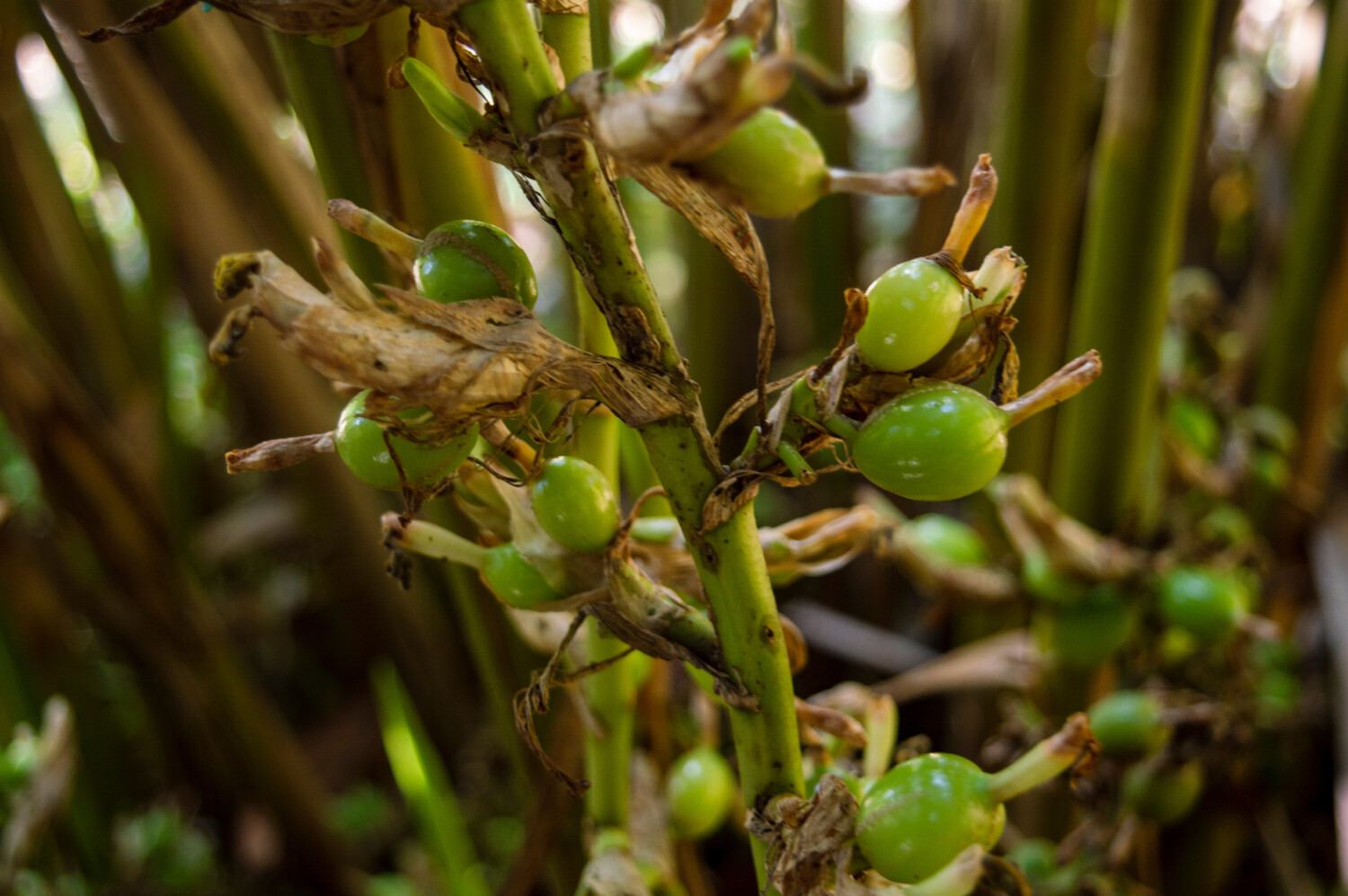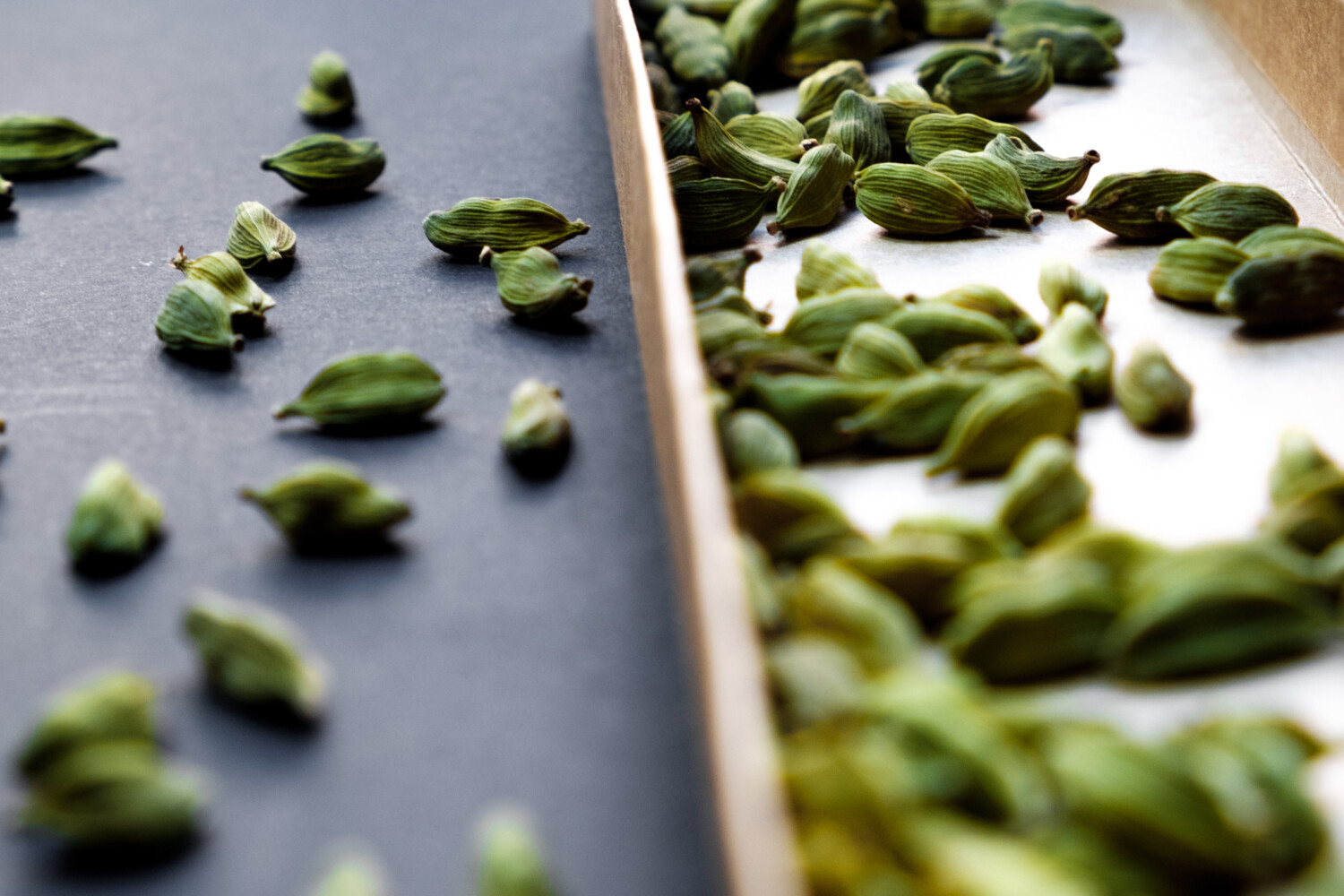Caviar, Champagne…cardamom? While it may not be the first thing that comes to mind when we think about culinary delicacies, the latter certainly carries its weight in the luxury category. Prices for green cardamom are known to rise up to $90 per kilo, ranking it No. 3 on the list of the most expensive spices in the world, following saffron and vanilla.
For those who are new to the spice, you can find its sweet, citrus-like flavor peeking through many Indian and Middle Eastern dishes both sweet and savory. It’s grown in tropical regions which include India and Costa Rica, and is a member of the ginger family. It’s available in both black and green varieties and can either be used in its pod form or as a ground powder derived from the seeds of the pod. Green cardamom — the focus of this article — is significantly more expensive than black cardamom and is also more difficult to find.
So why is green cardamom so expensive, exactly?
How Green Cardamom is Harvested and Grown
To understand why it can fetch such high prices in the market, we have to dig deeper into its inception from start to finish. As with many expensive ingredients, a lengthy and involved production process is behind green cardamom’s high price tag.
After farmers plant the cardamom seeds, they need to wait a grand total of three years before the crop is mature. After plants mature, the harvesting window lasts from July to February, which is relatively long. Despite the advantage of a long harvesting cycle, not all cardamon pods mature at exactly the same time, and only highly-skilled harvesters can determine which pods are ready to be picked at peak ripeness.

MORE: What’s the difference between white pepper and black pepper?
To reach this level of skill, harvesters must train for six months with farmers so they can discern which pods are ripe or raw. And even after all that work, only a total of approximately 10 pods can be harvested from each plant. To make matters more stressful, the stakes are quite high if mistakes are made. If the pods are collected too early, they won’t be aromatic and fetch a fair price in the market. If they are collected too late, they simply go to waste.
Weather conditions may also affect how much cardamom costs. If production is impacted negatively by rain or inclement weather, crops may be destroyed, which limits availability and drives up prices overall.
The Post-Harvest Process
Within 24 hours of harvesting, the perfectly ripe cardamom pods are ushered into a space where they must sit to dry for 18 hours. (And if they sit any longer than a day after being harvested, they risk decay.)
The drying process also impacts the green color of the pods, which is an important factor in determining their price in the marketplace. The machines that dry the pods use heat, and if the heat isn’t released perfectly it can negatively affect their color.

MORE: Suodiu, a viral Chinese trend, is a stir-fry dish featuring rocks
After drying comes sorting. A team of workers is tasked with the arduous job of sorting the smaller pods from the larger pods (which are more valuable) by hand. Ultimately, after it’s all said and done, only one-sixth of the pods harvested can be marketed as good-quality cardamom.
It’s because of all this extensive labor and attention to detail that some companies can charge a premium of $90 per kilogram of green cardamom.
The Economic Sustainability of Cardamom Production
While cardamom can sell for a lot in the marketplace, not all of that money is going directly into the pockets of its producers. Farming cardamom can be a costly endeavor, and up to 10% to 15% of the profits end up being re-invested in each acre on fertilizer alone. Add to that the losses due to weather, and producers may sometimes end up investing their own money out of pocket to keep production up.
Luckily, things are looking up for the industry, as it is projected to increase by $1,690,000 by 2025. The hope here is that farmers can keep up with demand and continue to supply the world with the spice.
MORE: Flavorful purple tomatoes are coming to grocery stores soon
This story originally appeared on Simplemost. Check out Simplemost for additional stories.


